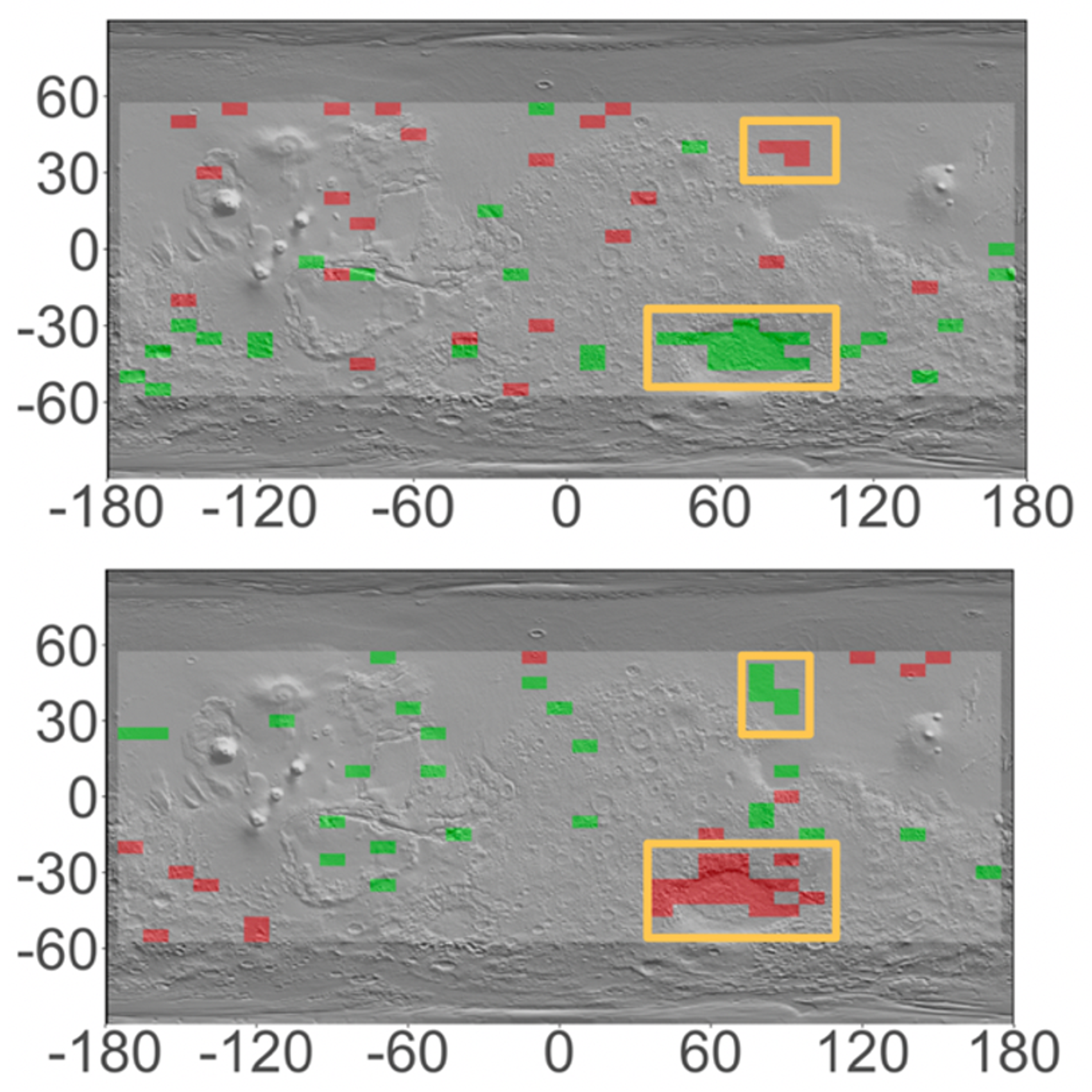
In our last story from the Europlanet Science Congress 2021, we move farther out to Mars and a presentation on how a team of scientists has used seasonal variations in the levels of hydrogen to identify possible sub-surface water ice deposits. The data collected comes from NASA’s Mars Odyssey spacecraft, which has been orbiting Mars for nearly twenty years. And two regions specifically were studied as areas of interest: Hellas Planitia and Utopia Rupes in the southern and northern hemispheres, respectively.
Presenter Dr. Germán Martínez explains: Data from Mars Odyssey’s Neutron Spectrometer showed signs of hydrogen beneath the surface of Mars from mid to equatorial latitudes, but we still had the challenge of working out whether this is in the form of water ice, which can readily be used as a resource or locked away in mineral salts or in soil grains and minerals. This is where the seasonal variation provides an important clue. As the coldest ground temperatures occur at the same time as the largest observed increase in hydrogen content, it suggests that water ice is forming in the shallow subsurface of these regions during the fall and winter seasons, and then sublimating into gas during the warm season of each hemisphere.
Finding water ice in the mid-latitudes is incredibly important for future crewed missions to Mars. We know there is water ice at the poles, but the extreme cold and lack of solar light limits just how easy it would be to access that water ice. To truly be useful to humans on Mars, we’ll need to find resources we can access, and it seems that this study has given us two more areas to look at as possibilities.
Martínez notes that the plan going forward is to continue studying the mineralogy of the two regions using different instruments to see if they can find rocks that have been altered by water. Perhaps they will have those results for us at next year’s conference.
More Information
EPSC press release
“Looking for Non-Polar Shallow Subsurface Water Ice in Preparation for Future Human Exploration of Mars,” German Martinez et al., 2021 September 13-24, European Planetary Science Congress 2021



